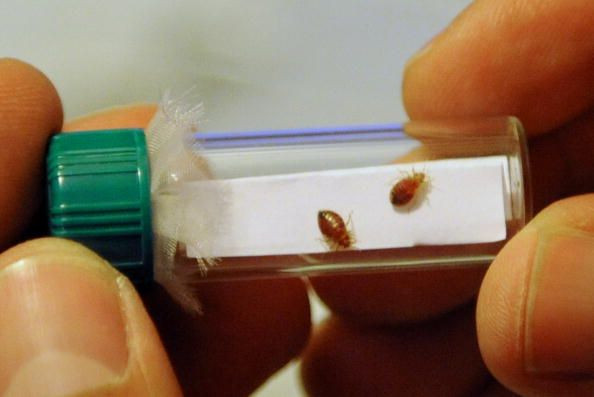Red Is A Bed Bug’s Favorite Color; Should You Change Your Bed Sheets To Prevent Infestation?

If you thought you had nothing in common with the nocturnal blood-sucking insects that like to take up residence in your sheets, think again. Apparently, bed bugs have both a favorite and least favorite color, just like many of us. According to a recent study published online in the Journal of Medical Entomology, the pesky insects prefer to live in red and black sheets, and usually avoid colors like yellow and green. Although the researchers say it's too early to use their findings as reason to refurbish your bedroom, they could lead to the development of more effective trapping systems.
Bedbugs are tiny pesky insects that like to infest bedding and furnishings in homes all over the world. Although they are not known to spread disease, they can be a major annoyance in part due to the fact that their bites sometimes cause irritating red welts. In the battle against these insects, researchers from the University of Florida and Union College in Lincoln, Neb. used tiny different-colored tents to see if the insects had preferences for where they chose to call home.
“We were trying to think of a new avenue to control bed bugs,” said lead researcher Dr. Corraine McNeill in a recent press release. McNeill said that she laughed at the idea of bed bugs having a color preference, but soon her suspicions were proven wrong. “We did some preliminary testing and found that bed bugs were specifically going to certain colors over others… From there, we took the idea and ran with it.”
Results showed that bedbugs strongly preferred the red and black tents, while avoiding other colors, such as green and yellow. Although the reasons for this preference are not completely understood, the team believes the bedbugs prefer red because it resembles the color of their own bodies. Since bed bugs prefer to live in groups, the color red may indicate others of their kind are nearby. By nature, bed bugs prefer to live in secluded, hidden areas, and the scientists believe the insects may steer clear of brighter colors because they could indicate well lit areas that make them easier to spot.
The team also found that the bed bug’s color preferences were largely dependent on a number of other variables. For example, female bed bugs preferred tents colored in shorter wavelengths, such as lilac and violet, while males preferred colors with longer wavelengths, such as red and black. Other factors included the bugs’ age, whether they were alone or in a group, and how much they had eaten recently.
Though the team believes its findings will eventually be used to develop more effective trapping systems, it’s still too early to tell, they said. “I always joke with people, ‘Make sure you get yellow sheets,” said McNeill. “But to be very honest, I think that would be stretching the results a little too much.”
Until they can confirm brighter colors work to ward off bedbugs, we’ll have to stick to other methods that have been proven effective in preventing bed bug infestations. According to About.com, there is no assocation between filth and bed bugs, so keeping a clean home won't protect anything. Rather, it’s what you do outside that counts. Bed bugs are most common in places that have high rates of human population turnover, such as hostels, hotels, and military barracks. The insects like to hitch rides on clothing and bags, which help them travel from one residence to another. Maintaining cleanliness here is of the utmost importance. If infestations do occur, there are a number of professional and do-it-yourself techniques that work to trap and exterminate the pests, so that they leave your home just as quickly as they came.
Source: McNeill CA, Pereira RM, Koehler PG, McNeill SA, Baldwin RW. Behavioral Responses of Nymph and Adult Cimex lectularius(Hemiptera: Cimicidae) to Colored Harborages. Journal of Medical Entomology . 2016



























